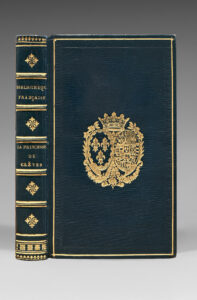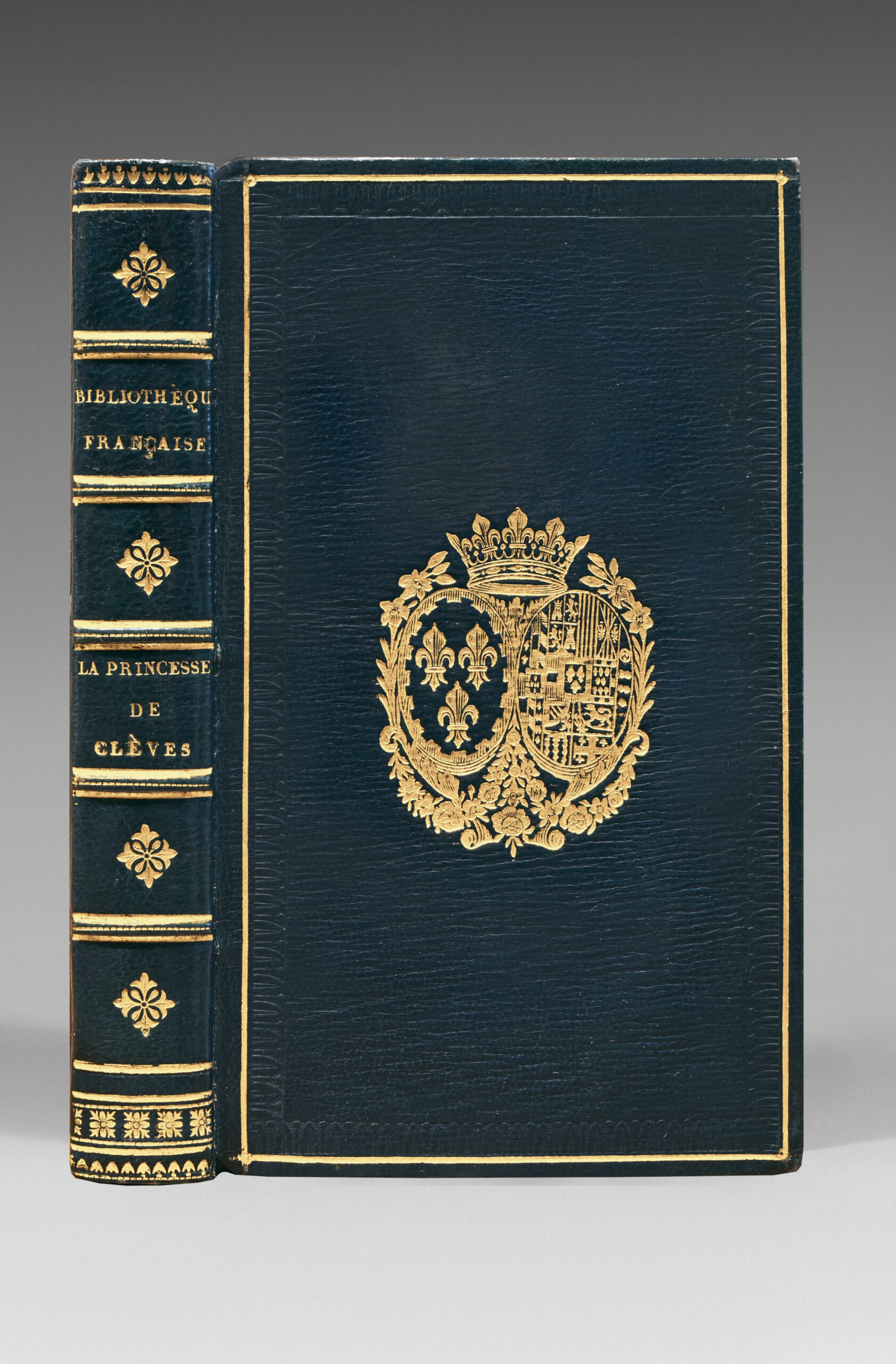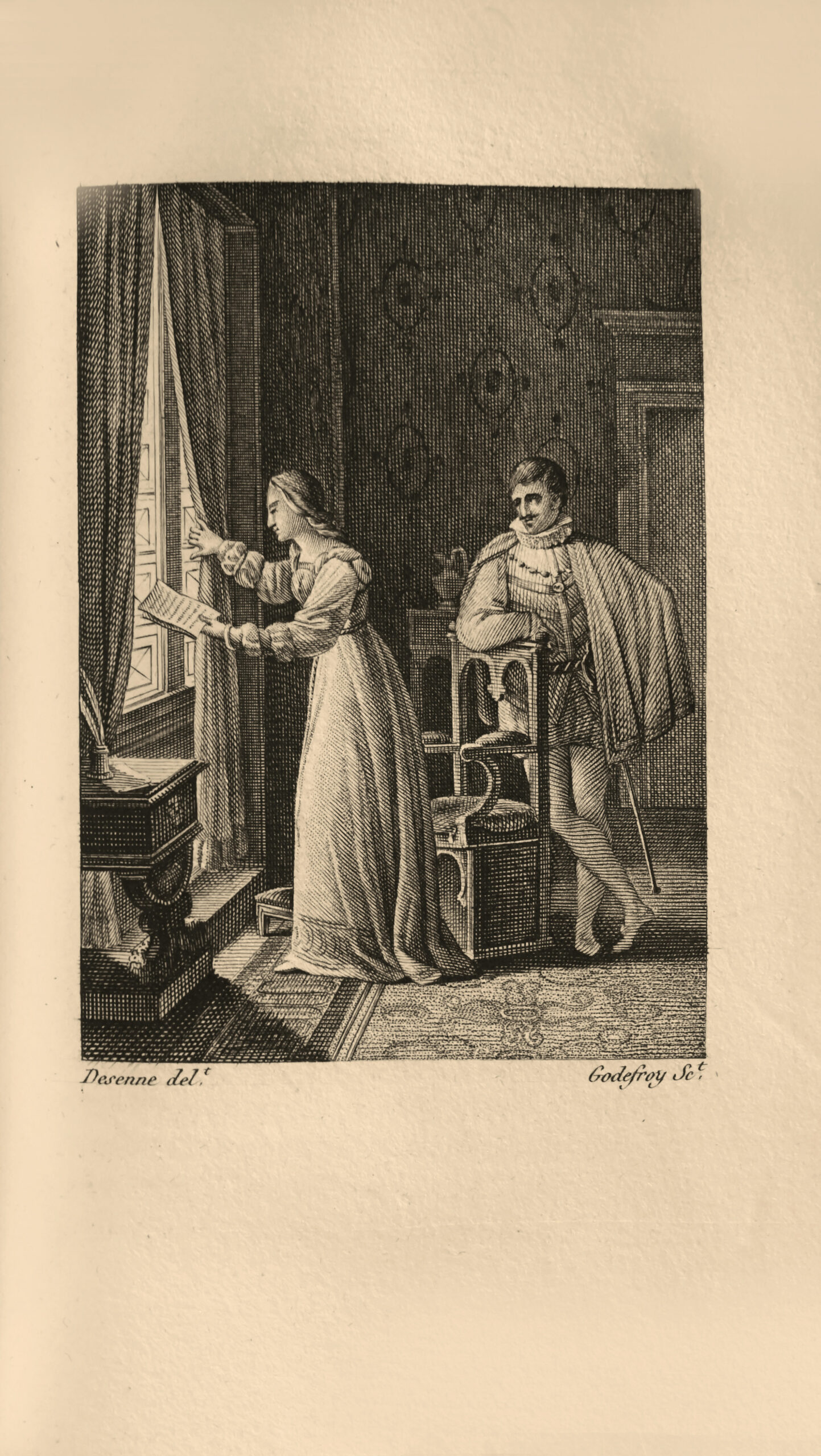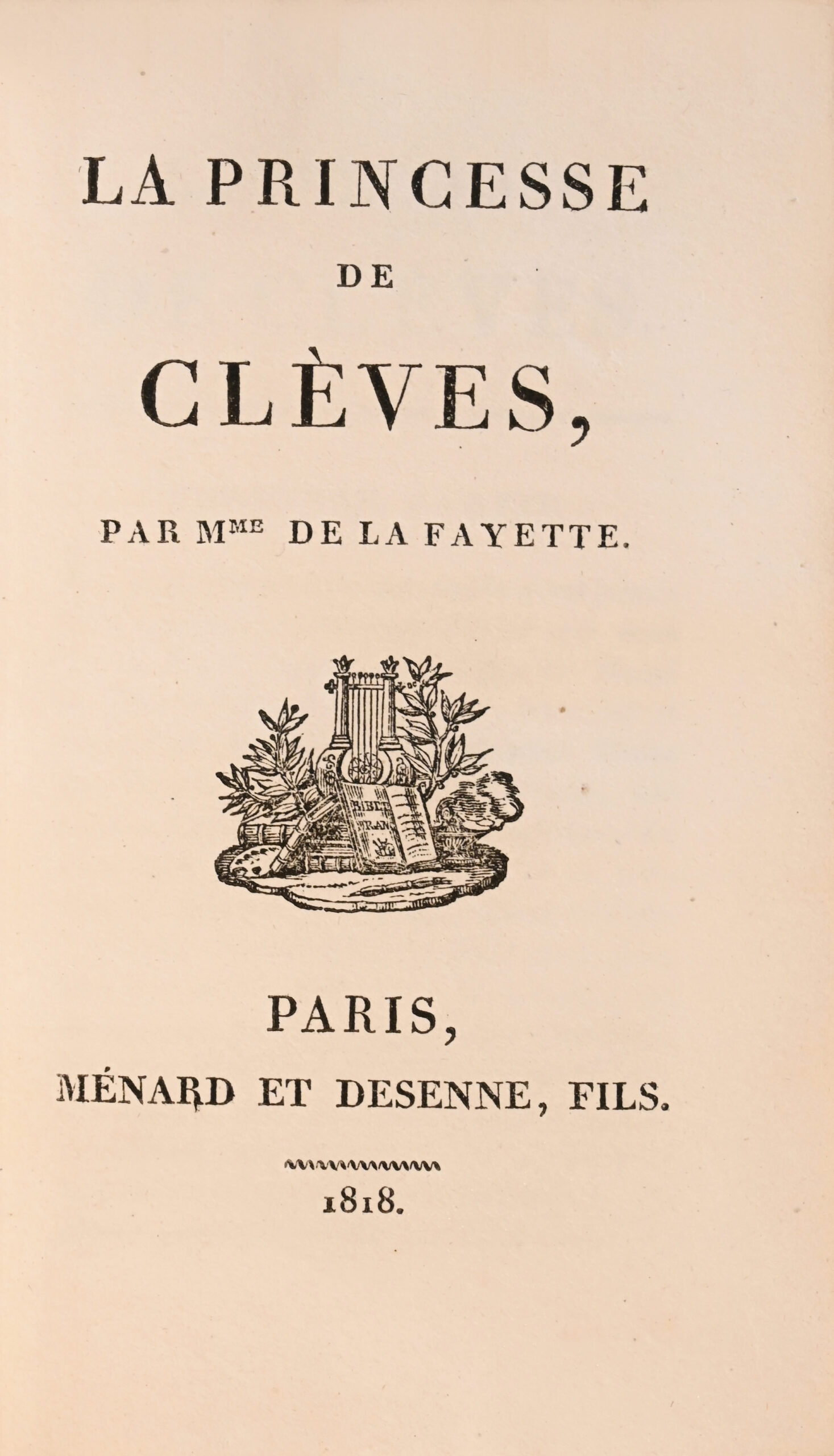Paris, Ménard et Desenne, 1818.
4 parts in 1 small volume 8vo of (2) ll. and 298 pp., 4 engravings out of text.
Full midnight blue morocco, gilt fillet and blind-stamped frame around the covers, gilt arms in the center, decorated ribbed spine, gilt inner border, gilt edges. Bound in contemporary armorial morocco by Simier.
134 x 90 mm.
“The Princess of Cleves” printed on fine vellum paper.
“Madame de Clèves, a young beauty perfect in every way, makes a remarkable debut at the court of the Queen Dauphine, daughter-in-law of Henry II. For this model of virtue, the image of Diane de Poitiers looms throughout the novel as the absolute counter-example.
But beneath her innocent exterior, the Princesse de Clèves, with her ability to analyze and control her feelings, reveals a surprising personality that has rarely been expressed so accurately before.
While courtly love has undeniable echoes here, this work, published in 1678 and often considered to be the first novel in French literature, is undeniably a huge step towards the novel as we know it today. Madame de Lafayette’s portrait gallery can be a little daunting for the modern reader, and her language is a little austere. Nevertheless, the psychological analysis is resolutely innovative and redeems the implausibility of certain scenes. What’s more, the feat of creating an entire novel from such a tenuous plot, with virtually no action, makes ‘The Princess of Cleves’ all the more pathetic because the characters have little control over external events and condemn themselves.”
A precious and superb copy bound in contemporary blue morocco by Simier with the arms of the Duchess of Berry.
Marie-Caroline-Ferdinande-Louise de Bourbon-Sicile, daughter of Ferdinand I, King of the Two Sicilies, and Marie-Clementine, Archduchess of Austria, was born in Naples on 5 November 1798. On 17 June 1816 she married Charles-Ferdinand d’Artois, Duc de Berry, second son of the future Charles X, who was assassinated on 13 February 1820. The Duchess of Berry, widowed at the age of 22, devoted herself to bringing up her two children, Louise-Marie-Thérèse d’Artois and Henri-Charles-Ferdinand-Marie-Dieudonné, Duke of Bordeaux, who was born posthumously; very courageous, in 1832 she tried to foment a legitimist uprising in the Vendée, which failed; Betrayed on 7 November of the same year by the Jewish convert Deutz, she was imprisoned in the citadel of Blaye where she gave birth to a daughter she had had with Count Hector Lucchesi-Palli, whom she had secretly married in 1831; released in June 1833, she was kept apart by the royal family and had the education of her son taken away from her. She lived in Venice and died on 17 April 1870 at Brunnsee Castle in Styria.
This princess, whose artistic tastes were highly developed, had built up a luxurious library in her château at Rosny, near Mantes, which was remarkable both for the choice of editions and the richness of the bindings, and for the importance of the manuscripts it contained.



